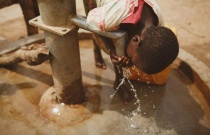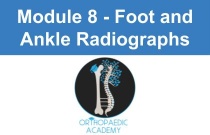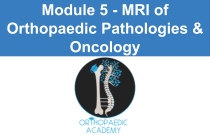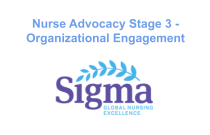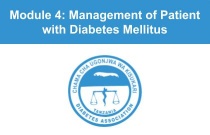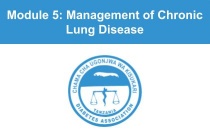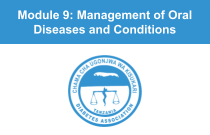Influence of Transition Points and Crises on Decision-Making in Symptom Management
Dee Traue
This session discusses how to deal with transition points and crises, both in terms of initial management options and how these options can be explained and discussed with patients approaching the end of life and their relatives and carers. The ways in which these transition points and crises influence decision-making in symptom....
Management of Cognitive Deterioration
Leena Srivastava and Mary Comiskey
As the end of life approaches, patients with either advanced cancer or other progressive life-limiting illnesses may experience a reduction in their cognitive function, such as forgetfulness, confusion or agitation. This session provides a framework for the management of diminishing cognitive function.
Management of Sore Mouth and Other Oral Problems
Sim Lan Koon and Jason Ward
Oral problems can impact greatly on the quality of life of patients receiving end-of-life care. This session provides a framework for the assessment and management of a sore mouth and other oral problems.
General Approach to Assessment of Symptoms
Howard Evans
This session provides a general approach to the assessment of symptoms, an essential first step before a plan for symptom management and care can be started.
Intersection of Nutrition with WASH and Climate Change
Centre for Global Child Health at The Hospital for Sick Children (SickKids) in Toronto, Canada
This course, designed for health professionals, examines the crucial connection between Water, Sanitation, and Hygiene (WASH) and nutrition. Participants will gain practical skills in promoting key WASH behaviours, including food hygiene, water safety, and sanitation. The course also explores the impact of climate change on nutr....
Postpartum Intra Uterine Contraceptive Device (PPIUCD)
the United States Agency for International Development
We will be learning about one component of postpartum family planning called PPIUCD insertion. Postpartum family planning (PPFP) defined as initiation and use of family planning methods immediate after delivery up to one year: Family planning is very important during this period to avoid unplanned pregnancy and to allow a....
Essential Care for Small Babies
Safiatu Fuday, Senesie Margao
The small baby needs all the steps of essential newborn care to prevent problems and recognize them promptly. Observation of early feeding attempts and findings on the initial assessment (weight, temperature and exam) will also help the provider plan how to support the special needs of a small baby. Actions to prevent infection....
Module 8: Foot and ankle Radiographs
Dr. Nicola Evans
• Dive into the essentials of interpreting knee radiographs, focusing on common injuries, abnormalities, and pathologies. • Improve your diagnostic accuracy with in-depth analysis of various radiographic techniques and real-life clinical scenarios.
Module 5: MRI of Orthopaedic Pathologies & Oncology
Dr. Nicola Evans
• Explore advanced MRI techniques for diagnosing orthopaedic pathologies and oncology-related conditions. • Gain in-depth knowledge of imaging protocols, interpretation skills, and clinical applications in musculoskeletal and oncological disorders.
Nurse Advocacy Stage 3 - Organizational Engagement
Wanda Montalvo, PhD, RN, FAAN and Siobhan O’Halloran, PhD, MSC, FFNMRCSI, BNS, RNT, RGN, RNID
1.25 Hours
This certificate program aims to develop nurses’ knowledge and skills in advocating for themselves as well as at the organizational, community, regional, or global levels. The future of nursing is informed by the lived experiences of nurses, educational preparation, and personal connection to social and professional issues that....
Pubertal Assessment
Russell Viner
This session discusses the five Tanner stages that boys and girls go through in pubertal development.
Health Promotion in Young People
Russell Viner
This session introduces the main issues linked to health promotion in young people. You will learn about the importance of educating young people and you will be presented with the most common approaches used to deliver these interventions.
Diagnosing Candidiasis
Claire Robertson, and Dr Clare Wood
This session explains how to diagnose candidiasis. It describes what samples should be taken and how they should be handled. It explains the available diagnostic tests, how to perform them, and how to interpret results.
Diagnosing Bacterial Vaginosis
Frances Keane, and Mona Malek
This session explains how to diagnose bacterial vaginosis (BV), the testing procedures and equipment used.
Diagnosing Anogenital Herpes
Anna Maria Geretti, Dr Anu Chawla, and Hugh Adler
The session explains how to select the most appropriate samples and tests for diagnosing genital herpes, discussing the available tests, their sensitivity and specificity, and their potential advantages or disadvantages.There will be an explanation of direct virus detection methods and serological tests, with guidance given on h....
Module 6: Impacts, Risk Factors and Inequalities
Jill Iliffe RN, RM, BAS, MIntS, IDMHHRL
Module 6 looks at the global picture for oral health and provides an overview of the current initiatives on oral health of the World Health Organisation. Module 6 also looks at the impacts of oral diseases to general health; risk factors for oral diseases; and the influence of inequalities in oral health care and outcomes.
Control of NCDs in Primary Health Care: An eco-Bio-Psycho-Socio- Spiritual Approach
Dr. Mercy Wanjala
This presentation would aim to cover the multidimensional aspects of managing Non-Communicable Diseases (NCDs) in a primary healthcare setting, acknowledging the complexity of factors that influence health outcomes.
Module 4: Management of Patient with Diabetes Mellitus
Prof. Kaushik Ramaiya, Prof. Andrew Swai, Dr. Zulfiqarali G. Abbas, Dr.Faraja Chiwanga, Dr. Athuman A. Mbalamula, Boniface Mphumuhila, Dr. Monica Appollo, Dr. Edna Majaliwa, Dr. Rahim Damji, Dr. Wolfgan Bernard and Dr. Aidan Banduka
Diabetes mellitus is a significant global health concern, requiring specialized management approaches. This module focuses on diabetes mellitus in detail, starting with its classification, risk factors, pathogenesis, and clinical presentation. Participants learn how to diagnose, manage, and monitor patients with diabetes mellitu....
Module 5: Management of Chronic Lung Disease
Dr. Mwanaada A. Kilima, Dr. Grace Shayo, Dr. Hussein Mwanga, Dr. Antony Sangare
Module 5 delves into the comprehensive management of Chronic Lung Diseases (CLDs), focusing on asthma, chronic obstructive pulmonary disease (COPD), post-infection chronic lung diseases, and common occupational lung diseases. The learning objectives span various aspects of diagnosis, treatment, and patient care. Participants are....
Module 9: Management of Oral Diseases and Conditions
Dr. Gemma Z. Berege, and Dr. Muya Mgaza
Module 9 introduces participants to oral health, dental caries, periodontal diseases, traumatic injuries, malocclusion, tooth eruption, shedding, edentulism, and congenital malformations. The objectives include understanding the burden, risk factors, and causes of oral diseases, recognizing clinical presentations, and providing....
Appropriate Imaging Examination for a Patient
Fiona Carmichael
The dentist has several options when choosing a radiograph, and should recognise which radiograph is most appropriate for a given pathology. The dentist should also be aware of the typical radiation doses and risks associated with these options.
Selection Criteria for Radiographic Examination
Fiona Carmichael
This session identifies the guidelines that support dentists in the selection of the most appropriate dental radiograph. It further explains how dentists incorporate the guidelines into dental practice.
The Importance of Good Record Keeping
Patricia Langley
This session introduces the importance of keeping good patient records. The reasons why full, accurate, contemporaneous records are essential are discussed and ‘good practice’ levels of record keeping that comply with existing guidelines are explored. The impact of the General Dental Council (GDC) on standards in patient record....
Translating Information into a Diagnosis
Andrew Shelley
As a dentist, you will need to make a thorough diagnosis from a variety of information sources. The aim of the diagnosis is to formulate an appropriate treatment plan for an individual.
Fissure Sealing - When and Where
Chris Deery
This session will introduce fissure sealants. It will discuss the evidence for, application of, and the role of fissure sealants.




